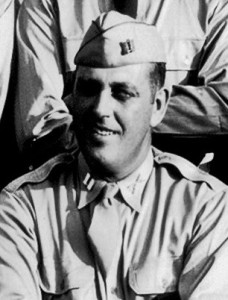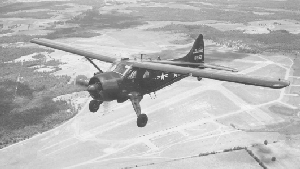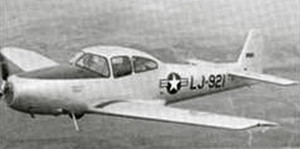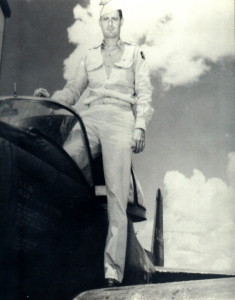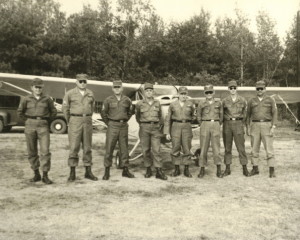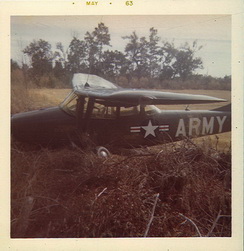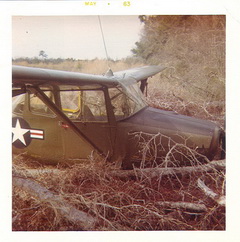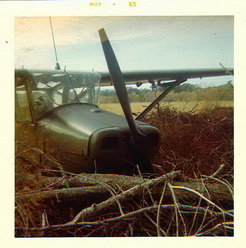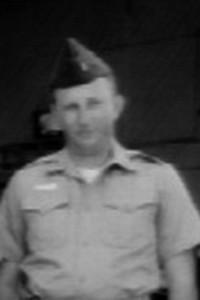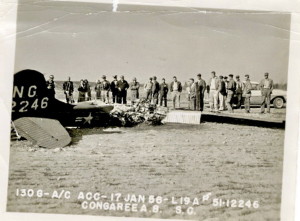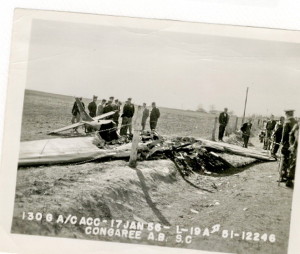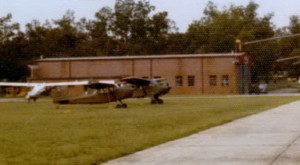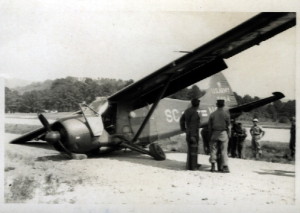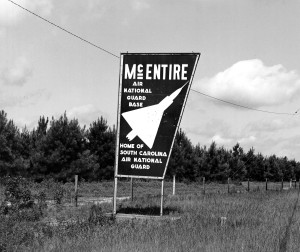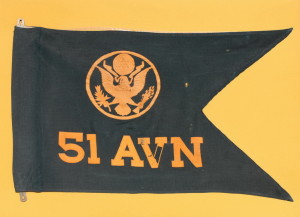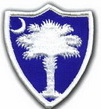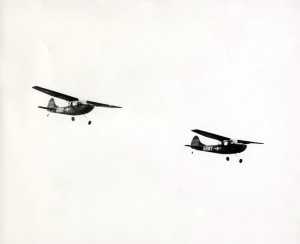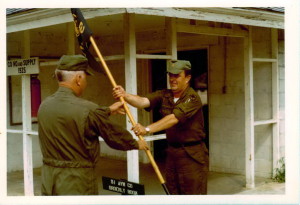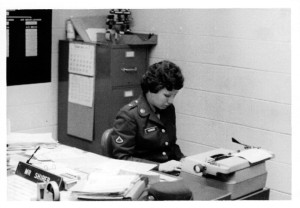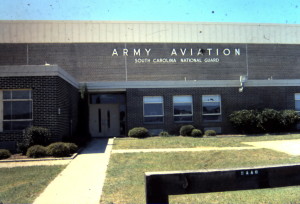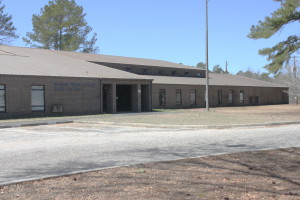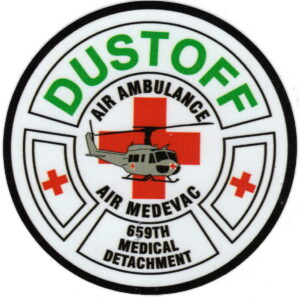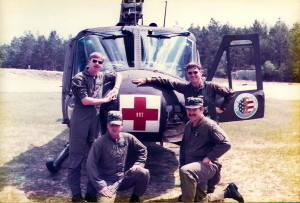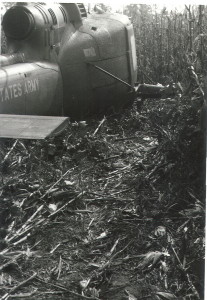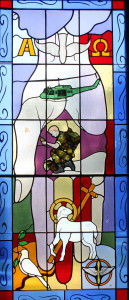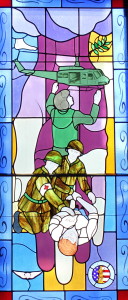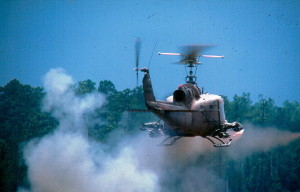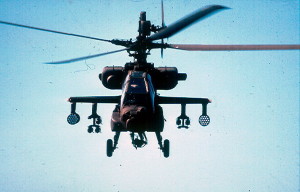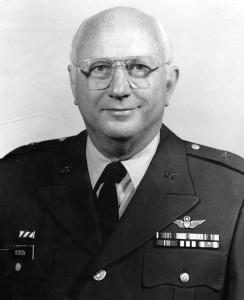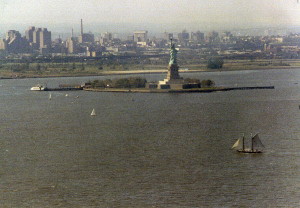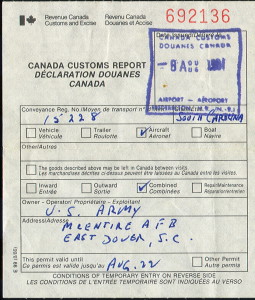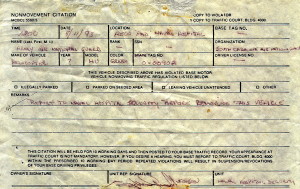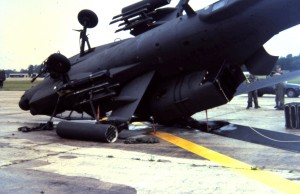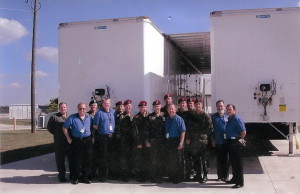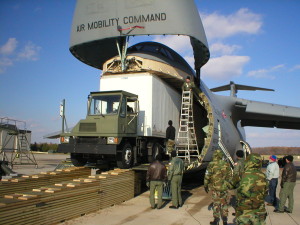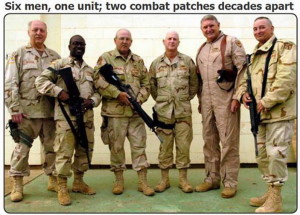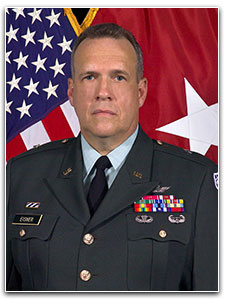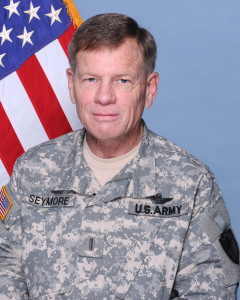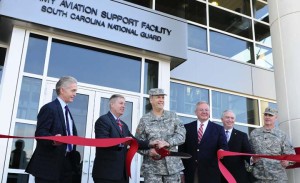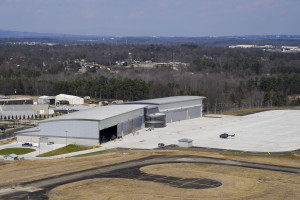Welcome Again to SCARNG Aviation Pictorial History
The story begins in September 1947.
Athough the South Carolina Army National Guard was originally formed in 1670 and Army Aviation was born in June 1942 with field artillery units being outfitted with organic air observation fixed wing aircraft for the purpose of becoming the forward eyes of artillery, the aviation program as we know it today began in September 1947 at a time when LTC Frank D. Pinckney was the director over state ordinance assets and assigned the task of organizing the Army Aviation activities at Congaree Air Base to support the new units as they received their organic aircraft. (Note: Congaree Air Base was originally named Columbia Army Airfield when constructed in January 1943 and later, July 1944, Marine Corps Auxiliary Airfield Congaree)
The reason for this Army Aviation organization was twofold:
a. The Army Air Corps had just become a separate branch of service, United States Air Force, taking with it all aviation assets from the Army except for the L-16’s and L-17’s.
b. The National Guard was being reconstituted following the end of World War II having two missions. The first, the state mission, was designed to deal with state disaster under control of the governor and second, the federal mission, was designed to be in reserve for the active military. At the time, units would drill for two hours on Monday nights participating in lots of Drill and Ceremony (Weekend unit training assemblies started 1965 0701). As part of reconstituting the National Guard in South Carolina, Headquarters Company, 51st Infantry Division was located in St. Matthews with the unit make-up containing a “Division Air” section with organic aircraft and maintenance personnel.
CPT William T. “Boots” Oliver was the Company Commander.
Additionally, the 178th Field Artillery Battalion located in Greer; the 296th Field Artillery Battalion located in Florence; and the 248th Field Artillery Battalion located in Georgetown were reorganized in 1947 and all had organic observation airplanes included in their make-up.
First order of business at hand for LTC Pinckney was to acquire work space to accommodate the new Army Aviation Program. At the time the Air Guard’s link trainer building was available so LTC Pinckney acquired the building and had it converted to a fixed wing hangar. Thus, the Army Aviation Support Facility (AASF) came into existence although the hanger was not known as such at the time. Jim Harmon, director of state maintenance, was then tasked to renovate the building to accommodate maintenance of the aircraft by removing the double doors and widening the opening to 40 feet span to accommodate the wing span of the fix wing fleet. 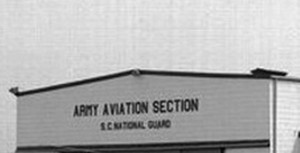
This converted facility was used from 1948 until 1958. Even today the underside of the roof still bears the silver paint used to improve lighting. In later years, this same facility would house the air station canteen, BX, and Credit Union.
Having already been delivered from the factory, five L-16 airplanes and one L-17 airplane had to be serviced, secured and put into storage. All of these aircraft were new when flown to the air base and parked on the ramp of the runway. The L-16 was a two crew liaison aircraft primarily used for artillery observation. The L-17 was a four-place aircraft built by North American used primarily for VIP transport missions.
At this point, the next task for LTC Pinckney was to establish a work force to put the six airplanes into temporary, long-term storage. To fill the work force need he hired Robert Brockman, James C. Wagers, and James Glenn. They reported to work on Tuesday, 2 Sep 1947, the first workday after the Labor Day week-end. Mr. Glenn worked for a very short time at Fort Jackson and then moved on to California. So, at this 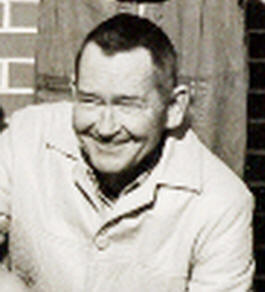
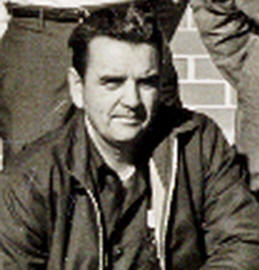 point it would seem appropriate to refer to Mr. Brockman and Mr. Wagers as the fathers of South Carolina Army National Guard Aviation. Mr. Brockman and Mr. Wagers worked at Congaree Air Base where their first job was to prepare the six airplanes for long term temporary storage. This period of storage was necessary due to the hanger not being usable as of yet and at the time the Army Guard didn’t have any pilots on board and current to fly the airplanes. These airplanes were partially disassembled, crated, and stored in the Air Guard warehouses located along the back road of the air base.
point it would seem appropriate to refer to Mr. Brockman and Mr. Wagers as the fathers of South Carolina Army National Guard Aviation. Mr. Brockman and Mr. Wagers worked at Congaree Air Base where their first job was to prepare the six airplanes for long term temporary storage. This period of storage was necessary due to the hanger not being usable as of yet and at the time the Army Guard didn’t have any pilots on board and current to fly the airplanes. These airplanes were partially disassembled, crated, and stored in the Air Guard warehouses located along the back road of the air base.
Having worked in supply while in the Army Air Corps, Mr. Brockman knew the use of the forms and records and the supply procedures very well and Mr. Wagers had maintained aircraft while serving in the US Navy. Their vast aviation knowledge and experience complemented each other and was instrumental in the startup the new aviation program. With the airplanes in storage, they spent their time during the winter months ordering parts, common hardware, predicted consumables and getting better organized.
As soon as the hanger renovations were completed and the hanger occupied, the next task was to ready the airplanes for flight. The first airplane assembled, on the ramp, and ready to fly was the L-17 Navion serial number 47-1365 (Registered as civilian N10552). Since the new Army Guard was being formed and didn’t have any pilots on board, MAJ Robert L. Morrell from the Air Guard helped out by flying the airplane occasionally.
As additional hanger space was procured and personnel were on board, the five L-16’s were distributed out to units located in Florence, Georgetown, and Spartanburg. The L-17 remained at Congaree Air Base although it was unit property of the 51st Division Headquarters located in St. Matthews. The outlying units did crew chief type maintenance and the higher-level maintenance was accomplished at Congaree Air Base.
In early 1948 while the aviation program was maturing and in preparation for AT, pilot check-outs were being conducted by C. C. Thomas. He was conducting these check rides in blue jeans due to not everyone having been issued their authorized uniforms and equipment,
The first annual training encampment was conducted in the summer of 1948 with pilots from the 178th Field Artillery and 296th Field Artillery at Hilton Field on Ft. Jackson, South Carolina “Camps of Instruction.” Since the units were part of the 51st Division, annual training in 1950 was conducted at Ft. McClellan, Alabama along with the Florida piece of the division assets.
CPT William Hale reported for duty during the winter of ’48-’49 as the first Army Advisor and was a rated L-16 pilot. He had just finished flight school before arriving.
CPT Clifford S. Athey had been hired as the 51st Division Air Officer and later, in 1949, became our first Army Aviation Support Facility Commander. He went active in the Army in 1955 and later, in 1973, served in the Republic of South Viet Nam.
By the end of 1949 Brockman, Wagers, John P. Grant, and Jacob B. Carroll were working at Congaree Air Base. Baron L. Smith was in Spartanburg supporting aircraft assigned to the 178th Field Artillery Battalion. Mr Smith later went on active duty and was replaced by Alfonzo Dean. Dewey Bullman later replaced Mr. Dean in Spartanburg supporting HQS Div Arty. Eugene Smith was in Florence with 296th Field Artillery Battalion. Even though there was no place to hanger aircraft in Georgetown, Paul Waccom was there in support of the 248th Field Artillery Battalion’s assigned aircraft. The airplanes in Georgetown were merely tied down on the ramp. All of this increase of personnel came about due to major growth in the new aviation program.
In early 1951 the L-19’s started arriving to replace the L-16’s.
.
1951 1215 – 1LT William P. (Billy) Dent and a passenger, MAJ Elmer P. Fleming were on a night flight returning from Washington, D.C. in a L-19 when they experienced engine trouble causing them to bail out over North Carolina near Kittrell parachuting safely to the ground. Surprisingly, the airplane landed on its own with damage to the forward half of the fuselage instead of being completely demolished. However, the airplane was never flown again. The reason for them bailing out was the oil filler cap was not tightly closed; the engine oil was siphoned out in flight; and the engine lost power.
Mr. Brockman became an Ordinance Warrant Officer in 1953. This was also the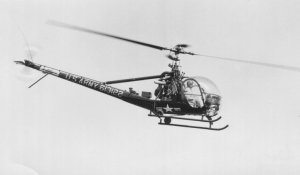 same
same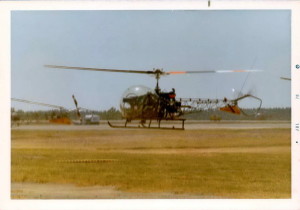 year the first OH-13’s and OH-23’s came to the South Carolina Army National Guard. Until arrival of these helicopters, the aviation program in SCARNG consisted of all fixed wing aircraft. Clifford O. Hendrix started working at the hanger this year as well. By the end of the year, Mr. Hendrix and Mr. Wagers had also stripped and painted the second L-17 of the fleet. The airplane was in bad shape when it arrived.
year the first OH-13’s and OH-23’s came to the South Carolina Army National Guard. Until arrival of these helicopters, the aviation program in SCARNG consisted of all fixed wing aircraft. Clifford O. Hendrix started working at the hanger this year as well. By the end of the year, Mr. Hendrix and Mr. Wagers had also stripped and painted the second L-17 of the fleet. The airplane was in bad shape when it arrived.
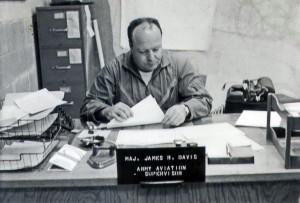
MAJ James R. Davis transitioned from flying fixed wing to rotor wing aircraft . He replaced MAJ Athey as Army Aviation Support Facility Commander in 1955.
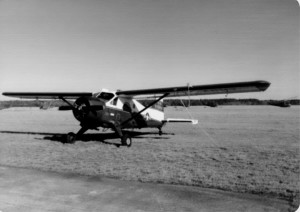
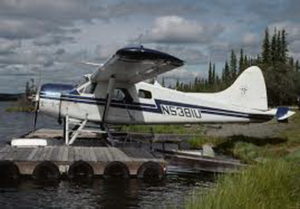
In early 1955 the L-20’s started arriving to replace the L-17’s. Although it was new from the factory, the first L-20 designated as a U-6A in 1962, tail number 55-694 c/n 915, was picked up at Ft. Bragg, N.C. by James R. Davis and Mr. Carroll. (A note here, they also turned-in this same airplane to the bone yard in Arizona. This airplane just happened to be the last U6-A in the Army inventory. Today it flies the skies of Alaska as N5381U.)
Having graduated from Helicopter Flight School in June 1955, 2LT Marion H. Kinnon became the first ROTC commissioned officer to attend flight school from South Carolina Army National Guard.
1LT Dick White became the first fallen comrade on 15 Jan 1956 when he died in an accident while flying an L-19, tail number 51-12246. He and an agent were flying a still search mission when the airplane stalled in a steep left turn and crashed. On impact the stick went far enough forward to short out the battery and very quickly caused the leaking fuel to ignite.
1958 – The new hanger was occupied which had been constructed in an area known as the Pecan Groove. This new construction provided a hanger and parking space suitable for all of the outlying aviation assets to be relocated to Congaree Air Base. By the end of 1960 by direction of National Guard Bureau all of the assets had been relocated back to Congaree Air Base.
While being checked out in 1958 in Louisville, Kentucky, MAJ Wade Franklin lost brakes and ran off the right side of the dirt airstrip thus damaging the landing gear. The last three of the tail number were 694.
Need your picture of the St. Matthews Armory here. Please share.
Prior to 1 Apr 1959 the South Carolina piece of the 51st Infantry Division Headquarters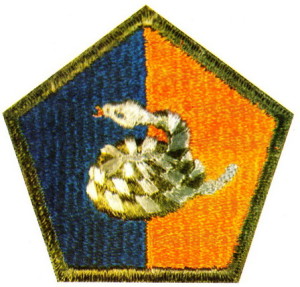 was located in St. Matthews, South Carolina. Resulting from a major reorganization within the Army National Guard, the 51st Aviation (Along with 451st Aircraft Maintenance Detachment) replaced the Division Headquarters in St. Matthews but remained an element of the 51st Infantry Division. MAJ William P. (Billy) Dent became the Commander on 1 Apr 1959. MSG David Ayers was the First Sergeant
was located in St. Matthews, South Carolina. Resulting from a major reorganization within the Army National Guard, the 51st Aviation (Along with 451st Aircraft Maintenance Detachment) replaced the Division Headquarters in St. Matthews but remained an element of the 51st Infantry Division. MAJ William P. (Billy) Dent became the Commander on 1 Apr 1959. MSG David Ayers was the First Sergeant
This change caused new MOS training and recruiting to fill vacancies in the TOE. The 51st Aviation being the only stand-alone aviation company in the state at that time was the natural for becoming the parent unit for AASF. By being the parent unit for the AASF, it allowed for any special tools organic to the unit needed at the AASF to be hand receipted to the facility for everyday maintenance of aircraft being worked on at the hanger located on Congaree Air Base.
Congaree Air Base was renamed McEntire Air National Guard Base in October 1961 by Governor Ernest F. Hollings in honor of Brigadier General Barnie B. McEntire, Jr. BG McEntire was the first commander of the South Carolina Air National Guard and its first general officer. He died on 25 May 1961 while attempting to land his malfunctioning F-104 in the Susquehanna River to not only avoid crashing into a populated area but to also save the airplane so the engine flameout could be investigated to determine the cause for multiple previous flameouts among the F-104 fleet.
.
1963 – 51st Aviation reorganized as 51st Aviation Company and was no longer assigned to the 51st Infantry Division. (The 51st Infantry Division was deactivated as a result of the 1963 major reorganization within the National Guard.)
1LT Hugh G. Baiden came on board in aviation when he graduated from flight school as a fixed wing pilot in 1964. Prior to flight school he served as an Armor Officer.
1965 0701 – After a trial period to evaluate the multiple week-end unit training assemblies, all units in the South Carolina National Guard officially started training one weekend a month instead of the traditional one night a week. Larger scale training opportunities were enhanced by the implementation of this concept.
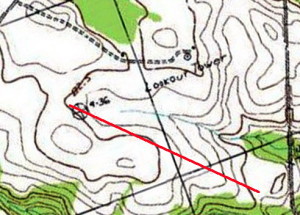
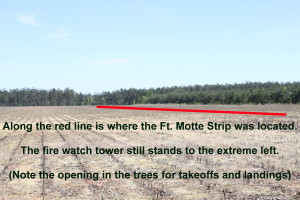
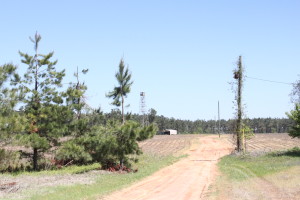
On drill weekend the company used the Fort Motte Strip for a staging area. Fort Motte Strip was a leased property. Unit volunteers provided the overnight security of the airplanes. All of this “getting the job done” was in true spirit of the hometown Guard.
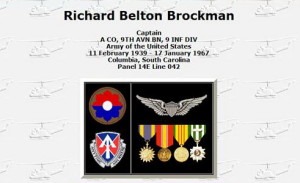 CPT Richard B. (Dicky) Brockman, a Palmetto Military Academy graduate and flight school graduate left South Carolina for a tour in the Republic of South Viet Nam in December 1966. Sadly, he very quickly became a fallen comrade on 17 Jan 1967 while flying with 118th AHC, 145th CAB.
CPT Richard B. (Dicky) Brockman, a Palmetto Military Academy graduate and flight school graduate left South Carolina for a tour in the Republic of South Viet Nam in December 1966. Sadly, he very quickly became a fallen comrade on 17 Jan 1967 while flying with 118th AHC, 145th CAB.
1968 – 51st Aviation Company became 51st Aviation Company (Airmobile) authorized CH-34 helicopters. 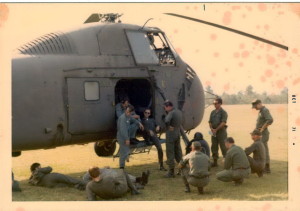 Frank Lloyd and Claude Lott ferried the first aircraft to McEntire. (Claude Lott was on Active Duty at the time but was recruited to help ferry the aircraft to MMT.) CW2 Robert C. Leopold was first rated CH-34 pilot in SCARNG.
Frank Lloyd and Claude Lott ferried the first aircraft to McEntire. (Claude Lott was on Active Duty at the time but was recruited to help ferry the aircraft to MMT.) CW2 Robert C. Leopold was first rated CH-34 pilot in SCARNG.
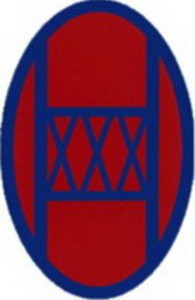
1968 0101 – Along with the reorganization of 30th Infantry Division in 1968 where 2nd Brigade, 30th Infantry Division (Mechanized) became the South Carolina brigade of the division came a slight growth in the aviation program. HHC, 2nd Brigade received OH-13 and OH-23 helicopters (two of each) assigned to its aviation section. CPT Charlie Smoak was the Aviation Section Leader and SSG Jerry Neese was the Section NCO
1971 brought about major change within the entire Army National Guard.
1971 0501 – The 51st Aviation Company (Airmobile) was reorganized as 51st Aviation Company (Assault Helicopter). Initially, in lieu of UH-1 helicopters several CH-34’s were carried over. The UH-1’s started showing up in early 1972. Also, Detachment 1, 51st Aviation Company was organized in Eastover (McEntire) with the mission to provide limited Direct Support Maintenance for the 51st Aviation Company. Detachment 1 was commanded by CPT Phil Fidler. SFC James C. Wagers was the Detachment NCO.
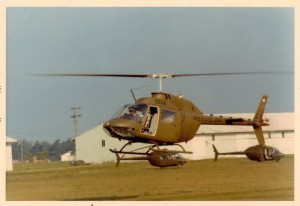 Additionally, in South Carolina HHB, 151st Field Artillery picked-up an aviation section containing six OH-58A’s with seasoned former Viet Nam pilots assigned to the unit’s pilot positions. Additionally, 108th Signal Battalion picked-up an OH-58A; D Co, 122nd Engineers picked-up a UH-1 in their MTOE; and HHC, 228th Signal Group picked up a U-8, UH-1H’s, and OH-58A’s in their MTOE.
Additionally, in South Carolina HHB, 151st Field Artillery picked-up an aviation section containing six OH-58A’s with seasoned former Viet Nam pilots assigned to the unit’s pilot positions. Additionally, 108th Signal Battalion picked-up an OH-58A; D Co, 122nd Engineers picked-up a UH-1 in their MTOE; and HHC, 228th Signal Group picked up a U-8, UH-1H’s, and OH-58A’s in their MTOE.
Reorganization for the 51st Aviation Company (Assault Helicopter) took place again 1 Dec 1971. The 51st Aviation Company (Assault Helicopter) was reorganized as the 51st Assault Helicopter Company. As part of this reorganization Detachment 1, 51st Aviation Company, became the 51st Assault Helicopter Company’s Maintenance Platoon. These changes resulted from mission statement changes.
By this time a large pool of prior service personnel existed with a wide base of experience from former officer and enlisted members of such units as: 1st AVN Bde – 1st Inf Div – 4th Avn Bn – 7/17 Air Cav – 11th ACR – 15th Med Det (Med Evac), 1st Cav – 20th Eng Bde, Avn Sect – 42nd AHC – 48th AHC – 68th AHC – 92nd AHC – 114th AHC – 117th AHC – 118th AHC – 134th AHC – 173rd AHC – 174th AHC – 176th AHC – 187th AHC – 190th AHC – 195th AHC – 198th Inf Bde, Americal Div – 205th Avn Co – 220th Avn Co – 229th AHC – 240th AHC – 268th CAB – 317th Air Cav – 327th Air Cav – 334th AHC – 335th AHC – 409th TC Det – 498th Med Co – B Co, 4th Inf Div – B Trp, 1/9th Cav – B Co, 25th Avn Bn – C Co, 101Avn Bn – D/3/5 Air Cav.
1972 – 2nd Brigade, 30th Infantry Division (Mechanized) OH-13 and OH-23 aircraft were replaced by OH-58A aircraft.
MAJ Thomas Alexander assumed commander of the 51st Assault Helicopter Company from MAJ Marion H, Kinnon during Annual Training of 1972 at Camp Blanding, Florida. 1SG Ben Carroll was the First Sergeant at the time.
While at Annual Training in August of 1972, the Maintenance Platoon of the 51st Aviation Company completed their first UH-1H Preventive Maintenance Periodic Inspection (PMP) on aircraft 71-20003. This PMP was completed after the unit moved out on their field exercise under field conditions. It is well to note here that after taking all of the available UH-1’s to Camp Blanding, Florida for two weeks all of them were flown back to South Carolina with the exception of one UH-1H, tail number 391, that was NMCS for a main rotor blade due to lightning strike. The aircraft was recovered as soon as the blade was delivered to Camp Blanding.
One PFC was overheard saying that if he had been paid 50 cents per write-up, he had worked off he would have made more money than he was paid as a PFC for AT at Camp Blanding.
The completion of annual training in August 1972 set a benchmark for the first 25 years of South Carolina Army National Guard Aviation. The second 25 years begins now.
1973 – PVT Sylvia H. Hydrick became the first female soldier to enlist in a unit of the aviation community. As a member of the 51st Aviation Company in St. Matthews, PVT Hydrick completed Combat Basic Training at Ft. McClellan, Alabama where she graduated as the Honor Graduate.
.
As the size of the aviation program grew, the hanger also had to grow. The new AASF hanger was completed in the Spring of 1973. After the parent unit, 51st Assault Helicopter Company, returned from AT that year the hanger was occupied. Actually, before the unit returned aircraft 68-15422 was sling loaded back from Travis ANB in Savannah and placed on the ramp of the new hanger.
All Aviation Organizational and Direct Support level maintenance was being accomplished by mechanics at the Army Aviation Support Facility and all Depot level work being accomplished by the Atlanta Army Depot. Depot level maintenance remained in Atlanta until the Mississippi Transportation Repair Shop (MSTARS) came online in 1973.
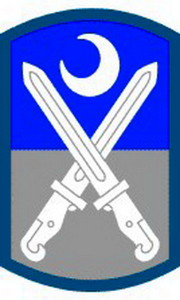
1974 0104 – The 30th Infantry Division was deactivated, and 2nd Brigade, 30th Infantry Division, became the 218th Infantry Brigade (Mechanized) (Separate) in Newberry, South Carolina. The aviation section grew to four OH-58’s and two UH-1H’s. MAJ Phil Fidler was the new Aviation Section Leader and SFC Ronnie Spigner was the Section NCO.
.
1977 12 – 51st Assault Helicopter Company relocated from the St. Matthews Armory to the newly constructed Eastover Armory. The new armory is located on Hwy 378 adjacent to McEntire Air National Guard Base. A major by-product of this move eliminated a need for lots of commuting time back and forth from the St Matthews Armory to the flight line.
1978 – Shortly after moving to the Eastover Armory, 51st Assault Helicopte r Company was reorganized once again. This reorganization changed the assault company to Troop D, 1st Squadron, 101st Cavalry becoming aligned with the 42nd Infantry Division located in New York. This change was a pivotal point for the aviation program in SCARNG. The overall program became more tactical thus, leaving behind all so familiar point A to point B flying environment. The new Troop consisted of a HQS Platoon, a Recon Platoon, a Gun Platoon, an Observation Platoon, and a Maintenance Platoon. The adding of an Observation Platoon brought with it an additional 10 ea. OH-58A’s increasing the total number of OH-58A’s within the state. MAJ D. Edward Baxley was the Troop Commander and 1SG Dewey Bullman was the First Sergeant at the time.
r Company was reorganized once again. This reorganization changed the assault company to Troop D, 1st Squadron, 101st Cavalry becoming aligned with the 42nd Infantry Division located in New York. This change was a pivotal point for the aviation program in SCARNG. The overall program became more tactical thus, leaving behind all so familiar point A to point B flying environment. The new Troop consisted of a HQS Platoon, a Recon Platoon, a Gun Platoon, an Observation Platoon, and a Maintenance Platoon. The adding of an Observation Platoon brought with it an additional 10 ea. OH-58A’s increasing the total number of OH-58A’s within the state. MAJ D. Edward Baxley was the Troop Commander and 1SG Dewey Bullman was the First Sergeant at the time.
The 659th Medical Detachment (Air Ambulance) was organized in July 1980 and became a tenant of the Eastover Armory. The detachment was made up of six UH-1V aircraft with the pilots, medics, maintenance personnel, and other support personnel to satisfy the MTOE mission.
1981 0919 – On what seemed like a normal flight on a nice, quiet day, it became necessary for CW3 Lem Grant while flying a mission in UH-1M, 66-643. to react to an in-flight emergency not addressed in the -10 Operator’s Manual. On decent the engine wasn’t properly responding to the governor. The end result was Mr. Grant shut off the main fuel and auto rotated down to a cornfield. Fortunately, the only damage to the aircraft was to the landing gear cross tubes. Mr. Grant received the Broke Wing Award during the 3rd Quarter of FY 83.
1983 – The 6:1 camouflage BDU’s were being issued. The light weight BDU’s were being developed but not quite there yet.
Everybody remembers the 1983 PT program change. Prior to 1983 everyone had to walk 4 miles in less than an hour to pass the PT test. Now members of the Guard had to complete the three-event sit-up, push-up, and two mile run commensurate with their age group to pass the test. The PT test was not a new experience for those of us who had recently attended an active-duty school because a pre-requisite for attendance in most cases was to pass the three event PT test. Initially, participation was slowly received and everybody kind of eased into the program. However, it didn’t take long before the new PT test became the norm.
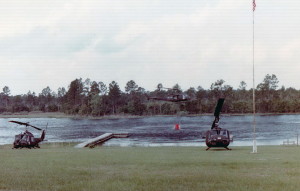
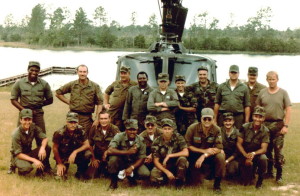
1983 05 – Troop D, 1st Squadron, 101st Cavalry traveled to Camp Blanding, Florida where the unit successfully challenged the Pinecastle Electronic Warfare Range in Pinecastle, Florida. The mission for the gunships was to move forward while being guided by OH-58 scout aircraft and attack predetermined targets while not being detected by avoiding Naval Radar.
These stained windows were installed in the Chapel at McCrady Training Center in memory of two fallen comrades in Nov 1983. The window on the left was ” PRESENTED IN MEMORY OF CW3 DONALD F. LANDMESSER, 8 JUN 45 – 14 NOV 83, BY THE AVIATION COMMUNITY, SCARNG” The window on the right was” PRESENTED IN MEMORY OF SSG DONALD E. THORNTON, JR. 7 OCT 51 – 14 NOV 83, BY THE AVIATION COMUNITY, SCARNG” The opportunity presented itself to have these windows dedicated due to the Chapel being moved from its location on Ft Jackson proper to its present location at McCrady Training Center and in need of replacement windows. The aviation leadership, both officer and NCO, took advantage of the opportunity to collectively provide for the installation of one of the chapel windows in memory of our recent fallen comrades. As a result, the of entire aviation community coming together and much to the surprise of everyone, the two dedications were made after just one passing of the hat.
.
1986 01 – During the first drill weekend after the 12 Dec 1985 chartered flight, Arrow Air Flight 1285, crash that claimed the lives of 248 soldiers from the 101st Airborne Division on their way from the dessert to Ft. Campbell for the Christmas holidays, SGT Tony Denning was instrumental in a moment of silence observance and taking up a collection that was sent to the families. (Note: Just over a year earlier, a young man working as a custodian at AASF became so impressed with the military that he joined the Army and became a combat medic. SP4 Calvin McWhite was on flight 1285.)
1986 1002 – Troop D, 1st Squadron, 101st Cavalry was reorganized as 51st Aviation Battalion (Attack Helicopter). This reorganization process meant the transition would be straight from UH-1M gunships and UH-1H’s to AH-64A’s and UH-60A’s. This type of transition would be a first of a kind for the National Guard and generated lots of MOS and pilot transition training. Troop D had 125% strength at the time so the increase in authorized personnel was quickly overcome. Slotting of personnel from Troop D was not very difficult because if you were to look at the Troop MTOE it looked somewhat like a mini battalion. There was a HQS Platoon, a Recon Platoon, a Gun Platoon, an Observation Platoon, and a Maintenance Platoon. The 51st Aviation Battalion came with a Headquarters and Service Company and three Attack Companies. LTC Mark V. Rhett was the first commander of the new battalion while CSM Carlyle Wood was the first Command Sergeant Major.
. 1987 – BG Marion H. Kinnon was the first South Carolina Army National Guard Aviator General Officer serving as Deputy Adjutant General to then Adjutant General, MG T. Eston Marchant.
During the period 8 thru 22 August 1987, the 659th Med Det went to Gagetown, Canada for annual training thus becoming the first South Carolina aviation unit to deploy outside of the Continental United States. In route to Canada the flight passed through New York where the flight crews saw many views similar these.
When traveling outside of the USA everyone is subject to process through customs. You might even receive a parking ticket if you park in the wrong place.
1987 1201 – 51st Aviation Battalion (Attack Helicopter) was re-designated to 1st Battalion, 151st Aviation (Attack Helicopter) to be in alignment with the regimental system.
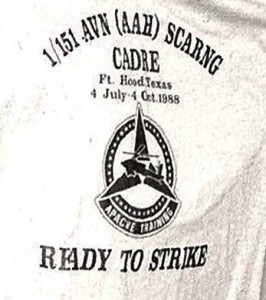
After enough individual transition training was completed, 1/151 AVN (AAH) sent a cadre from all aspects of the battalion to Ft. Hood, Texas from 4 Jul 1988 thru 4 Oct 1988 to participate with 3/229 AVN (AAH) while they were preparing for their fielding ARTEP. This training proved invaluable when our battalion started training up in preparation for ARTEP.
Father’s Day weekend in 1989 was quite an eye opener as to what the weather is capable of doing on short notice. On Friday, 16 Jun 1989 at approximately 16:40, McEntire experienced an unusual Micro Burst storm where the wind and rain was on top of the base without any warning. Suddenly, the wind started blowing and shaking the hanger doors to the point where two of the six doors were partially off the track at the bottom. After it’s passing we had seven APACHE’s over on their sides and one nearly upside down. ( A note here: Maintenance personnel with the assistance of two outstanding crane operators were able to upright the aircraft without any additional damage.) The way the wind was blowing across the Main Blades one would have to think the aircraft actually flew over on their sides instead of being physically blown over. All of the 0H-58’s rotated to the left into the wind and remained upright.
Need your picture of AT in Iceland here. Please share.
On Saturday, 17 June 1989, the 659th Medical Detachment departed for Annual Training in Iceland.
Need your picture of award
The South Carolina Army National Guard’s 1st Battalion, 151st Aviation Regiment, is one of seven National Guard AH-64 Apache attack helicopter battalions in the Army and was named the Army Aviation Association’s Outstanding Army Guard Aviation Unit in 1996
E Co, 151st Det1 was organized in 1996.
Need your picture of the Olympic Games here. Please share.
To support the 1996 Centennial Olympic Games in Atlanta, a group of 10 officers and 15 enlisted men were in Atlanta serving as part of the Aviation Task Force. They were awarded a Georgia Olympic Ribbon for their job well done.
Need your picture of AT in Panama here. Please share.
E Co, 151st Avn Det1 went to Panama for Annual Training in 1997 with a mission duration of six months. To accomplish the mission, members of the unit rotated in and out for the duration. CPT Shufford, the OIC and three enlisted men were there for the entire period.
September 1997 set the benchmark for the completion the first 50 years of South Carolina Army National Guard Aviation. The third 25 years begins now.
In 2002 South Carolina received its first Aviation Combined Arms Tactical Trainer (AVCATT) trailers. Don Smith was the first Battle Master for the Eastover AVCATT Program where the area of responsibility covered all training east of the Mississippi River. During the first two years from September 2003 until November 2005, equipment and personnel traveled over 67,000 miles and trained more than 4,000 aviators. AVCATT is a mobile, transportable, multi-station virtual simulation device that supports unit in collective and combat arms training for helicopter crews. The AVCRATT is composed of two trailers per suite with six reconfigurable modules for Apache Longbow, Chinook, and Blackhawk. AVCATT uses Helmet Mounted Display for out-the window scenes.
2003 09 – The members of Company A, 2/149th Aviation Battalion conducted weekend training exercise at McEntire Joint National Guard Base in September 2003 becoming the first South Carolina Unit to schedule and train with the Aviation Combined Tactical Trainer (AVCATT).
The Eastover AVCATT was later chosen by Aeronautical Systems Center (AFMC) in Wright-Patterson Air Force Base to participate in C-5 loadouts, tight but a successful move.
This photo appeared in the December 6, 2004, edition of The Olympia Observer published for Task Force Olympia soldiers serving in Operation Iraqi Freedom II. The front page article featured six members of the 1st Battalion, 151st Aviation Regiment who had all previously served combat tours in Viet Nam and were then serving in Iraq qualifying them for their second combat patch.
.
2010 08 – BG Lester D. Eisner was promoted to Major General becoming the first South Carolina Army National Guard Aviator Major General serving as Deputy Adjutant General.
.
201l 1201 marked 25 years of AH-64 and UH-60 helicopters in the South Carolina Army National Guard. Lots and lots of water have run under the bridge during that span.
CW5 Eric Seymore retired on 5 Jan 2014 after 44 years of service to the US Army and the South Carolina Army National Guard. His retirement ceremony marks a significant changing of the guard within the state as he was the last Viet Nam Veteran serving SCARNG. Little did he know when he joined the 51st Assault Helicopter Company in 1972 that he was starting a new military family tradition. When CW5 Seymore retired both of his sons, CPT Seymore and 1LT Seymore were serving in the SCARNG.
After sixty-six years the second Army Aviation Support Facility, AASF #2, was built. The Ribbon Cutting Ceremony took place on 19 Feb 2014 at Donaldson Center in Greenville, South Carolina. LTC Charlie Lewis was the first Facility Commander. (See AASF#2 on the navigation bar for additional photos.)
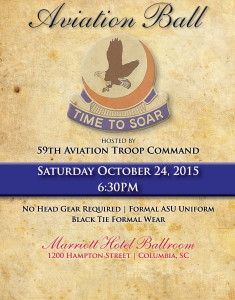
2015 1024 – 59th Aviation Troop Command hosted an Aviation Ball in Columbia. Even though recovery from the massive amounts of rainfall and flooding that took place the first weekend of the month was still ongoing, the event took place without a hitch. Some 250+ members and guests were in attendance as all units were well represented. We shall all be anxiously awaiting the next Aviation Ball.
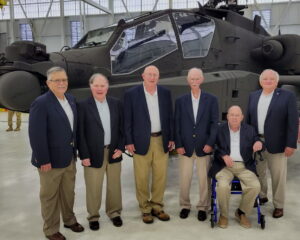
2022 0331 – This picture is a remake of when the first APACHES were rolled out. Now the APACHE battalion is outfitted with the AH-64E models. (See Then and Now)
2022 0902 – Today, 2 Sep 2022, marks 75 years of Army Aviation as we know it within the South Carolina Army National Guard.


These two were the first aviation personnel to report for duty.
More to come… please share.
